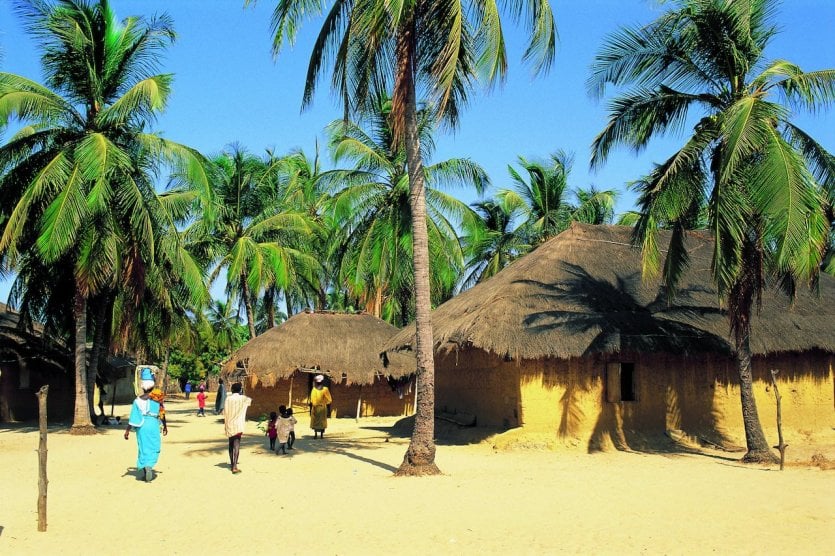
First and foremost, Senegal is a warm-hearted country that offers a cheerful, relaxed glimpse of Africa - especially in terms of timetables! And of course, it's dazzling in its cultural and natural diversity: in one trip, you'll feel like you've experienced 100. National parks, mangroves, bird sanctuaries, crystal-clear beaches and seaside resorts, pink lakes, lush savannah, long stretches of almost-deserted land, small traditional villages, holy cities... Senegal is a unique destination where "teranga", or hospitality, is omnipresent.
1. What to do in Senegal? Visit the capital, Dakar
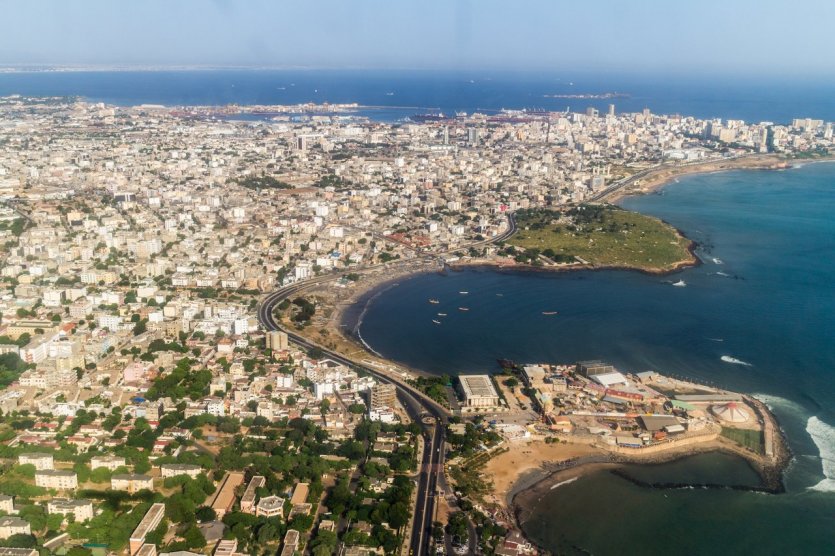
At the crossroads of Africa and the West, Dakar is a dynamic, cosmopolitan city that lives to the rhythm of an astonishing cultural melting pot: not surprising for the capital of a country that lives on tradition, farniente and sunshine! Constantly bustling, the city has managed to retain a touch of authenticity in the historic Plateau district and the working-class Medina, Yoff and Patte d'Oie neighborhoods. Be sure to visit the Grand Mosque, Dakar Cathedral, the port, Place de l'Indépendance, the Presidential Palace and the many traditional markets. Just a stone's throw away are the renowned Soumbédioune craft market, the imposing monument to the African Renaissance and the Pointe des Almadies, three sites of great interest.
2. Saint-Louis
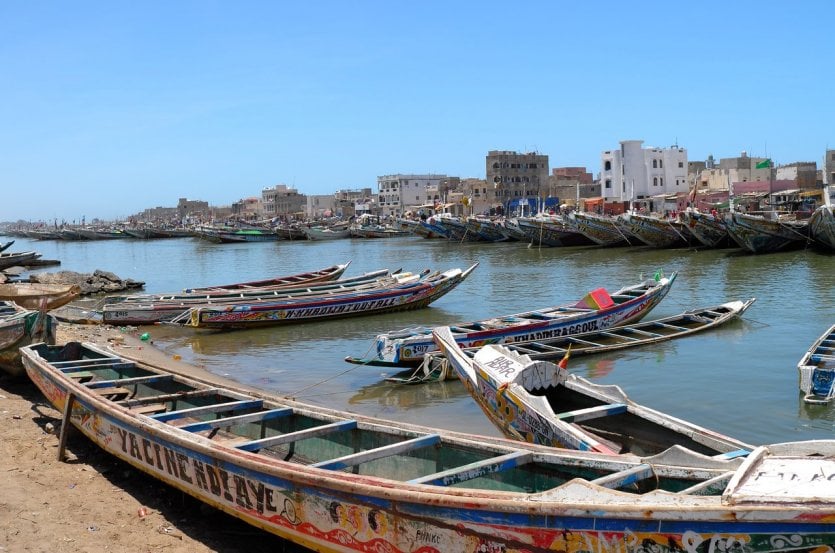
On the edge of the ocean, desert and Sahel, Saint-Louis was founded in the 17th century by sailors from Dieppe in honor of the French king, Saint-Louis. Its Unesco listing testifies to the rich historical heritage of Senegal's prettiest city. Horse-drawn carriage tours take in the city's districts - most of which date back to colonial times - and continue on to famous monuments such as the Faidherbe Bridge, the Governor's Palace, the Cathedral and numerous mosques. Also worth a visit is Hydrobase beach, the historic departure point for Jean Mermoz's fabulous transatlantic epic l'Aéropostale.
3. Casamance
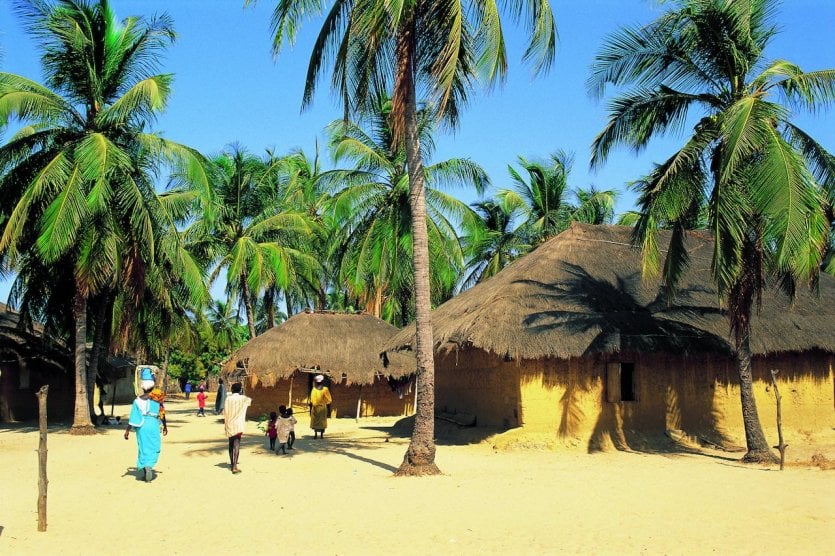
Casamance is certainly one of the most beautiful regions of West Africa, between Gambia and Guinea-Bissau. Its name is also that of the river that flows through it for 300 km, forming numerous bolongs: small islands traversed by thousands of birds. Inland, the vegetation is luxuriant, graced by an exceptional flora: baobabs, cheese trees, palms, eucalyptus, mango trees, papaya trees, mangroves... Forests, rice paddies, mangroves, beaches and orchards: the varied landscapes are home to small traditional villages, mainly inhabited by the Diola ethnic group.
4. What to do in Senegal Visit Touba
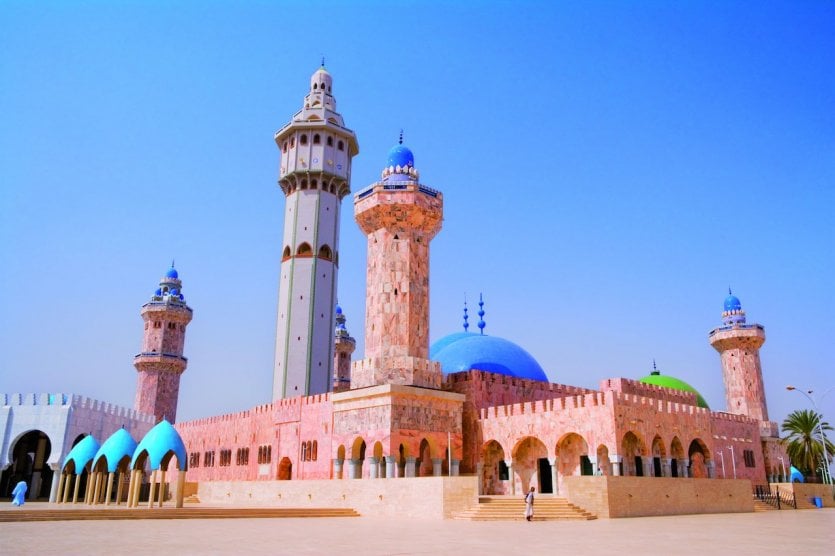
Touba comes from the Arabic "tûbâ", meaning "bliss", the sacred imprint of the town, headquarters of the Mouride Muslim brotherhood. Touba's Grand Mosque is the most visited building by the faithful and tourists alike, as is the library housing the writings of the city's founding father. Every year, the Grand Magal de Touba takes place, a huge pilgrimage distinguished from all others by its joyful, festive character: it commemorates the departure into exile of the brotherhood's founder, Sheikh Amadou Bamba, who was arrested for his religious convictions.
5. Pink lake
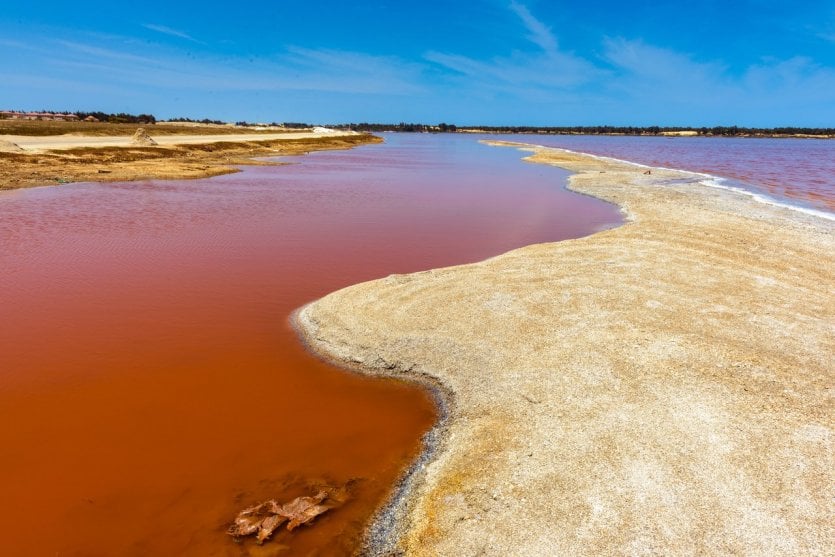
It's one of those unrealistic landscapes that seem to come from another world... Some forty kilometers from Dakar, Lac rose is an immense lagoon whose hues vary from pink to mauve, depending on the reflection of the sun. These variations are due to a high concentration of minerals, and the lake's high salt content means you can float effortlessly, just like in the Dead Sea! There's no shortage of activities on site: pirogue rides, buggies, quad bikes, dromedaries, horseback riding, 4X4s, visits to Fulani villages... But most impressive of all is the spectacle of the scrapers extracting the famous pink salt.
6. What to do in Senegal? Djoudj National Park
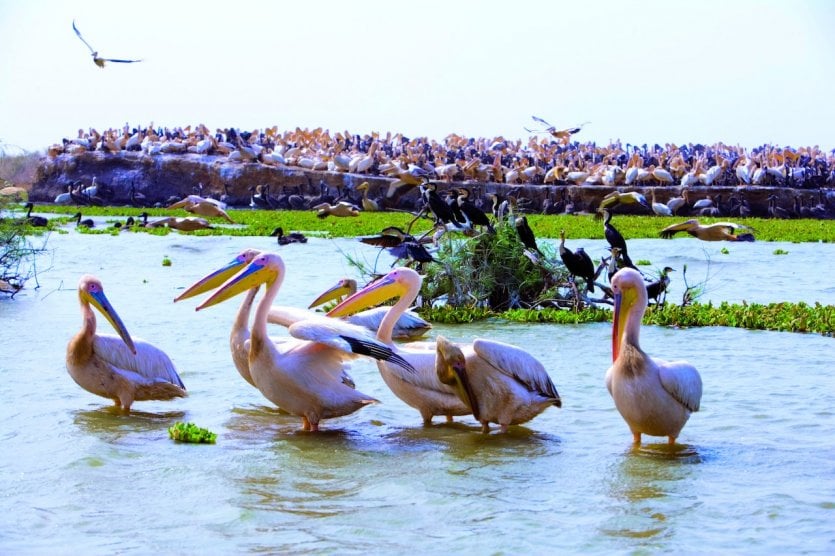
Djoudj is the world's third-largest ornithological park, with 3 million birds passing through every year, including 400 different species. Encompassing part of the river as well as wooded savannah areas, the park covers 16,000 ha: a veritable paradise for pelicans, flamingos, purple herons, egrets, cormorants and marabouts. The migration spectacle takes place between November and May, when the birds become roommates of jackals, hyenas, monkeys and gazelles.
7. Mbour
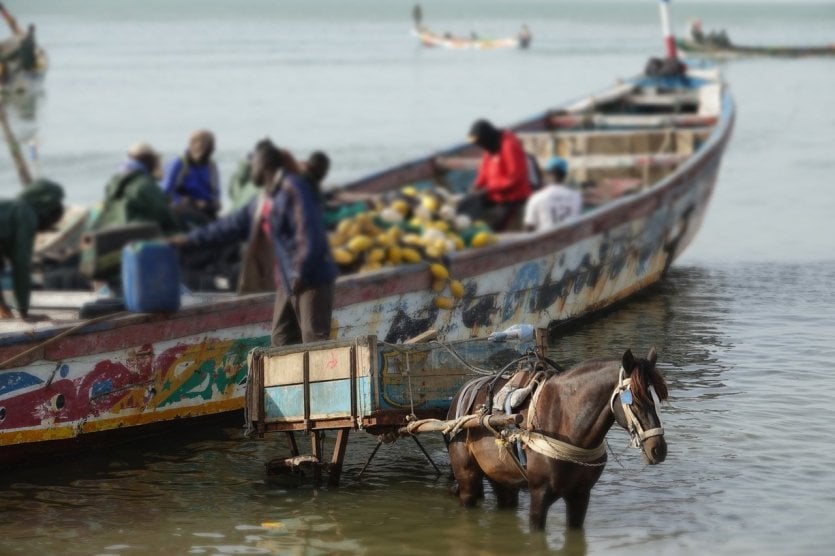
In the west of the country, MBour is Senegal's second-largest port, attracting big-game fishing enthusiasts as its waters teem with swordfish, barracuda and blue marlin. In fact, one of MBour's finest sights is thereturn of the fishermen at around 5 p.m.: hundreds of colorful pirogues pour in and unload in a never-ending hubbub. Other attractions include a fish market on the beach and a visit to the M'bour experimental ecological reserve, a protected site since 1987.
8. Niokolo Koba Park
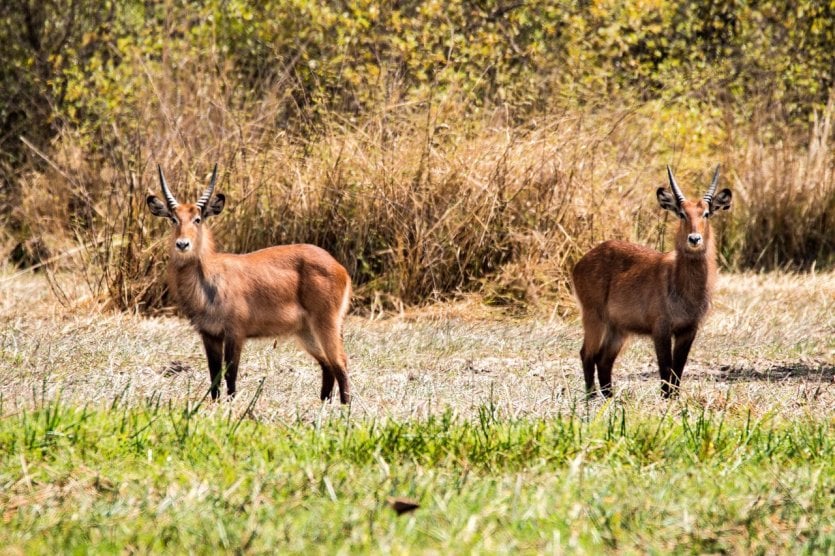
Covering an area of over 900,000 hectares, the Niokolo-Koba Park offers a rich and varied landscape, home to the plant and animal species most typical of the West African savannah. Listed as a UNESCO World Heritage Site and international biosphere reserve, it is home to 350 species of birds and 80 species of mammals, including the emblematic lions, leopards, elephants, antelopes, hippos and crocodiles. Many safaris are organized here, particularly between March and May, when the animals are least shy.
9. Siné Saloum
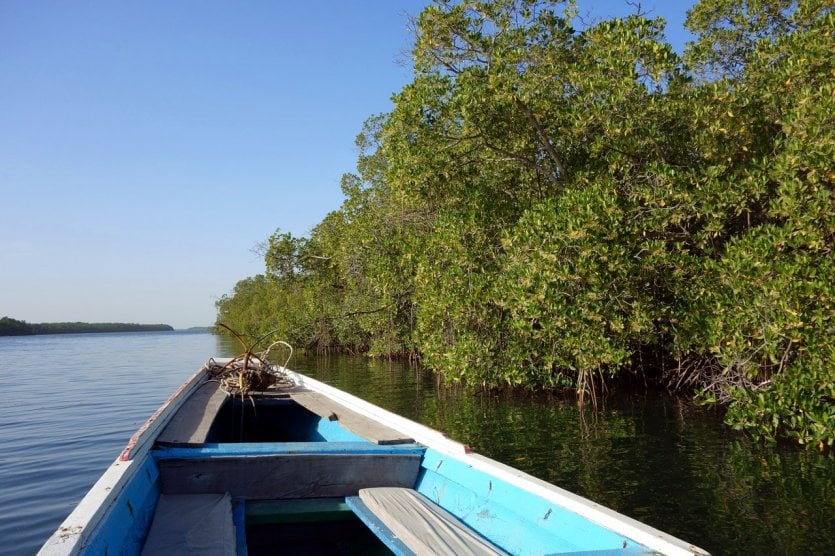
An ornithological paradise, the Sine-Saloum delta surprises with the beauty of its languid landscapes along a gigantic mangrove swamp, at the confluence of the Siné and Saloum rivers. Classified as a World Biosphere Reserve, its Curriculum Vitae is impressive: 9 classified forests, 2 marine protected areas, 2 community nature reserves and 1 nature park. This magnificent region is home to exceptional flora and fauna, which can be discovered aboard a local pirogue. It's also an opportunity to meet the local people, including the Sérère and Mandingue ethnic groups, who live to the rhythm of ancestral traditions.
10. What to do in Senegal Sunbathing on the beaches
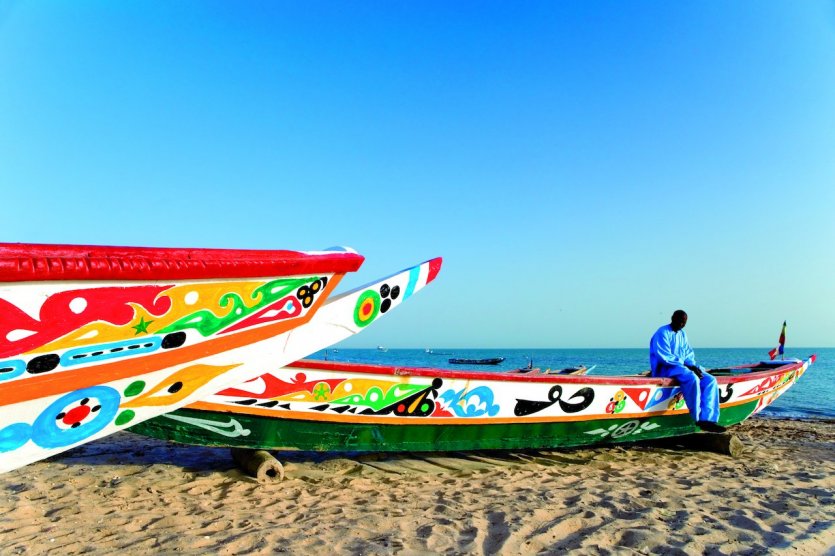
With its 700 km of coastline, Senegal boasts a host of beaches, some of which have been transformed into charming seaside resorts. The biggest of these is the famous Saly-Portudal, with its long beaches cradled by the Atlantic and bustling with water sports activities (Senegal is one of our top countries for winter surfing!) The beaches of Gorée and Almadies are the most family-friendly, as their bays and dykes protect them from the waves; the beach at Ngor-Village is one of the liveliest, as it's very popular with young people in summer! The Lebou village of Ouakam offers two natural cliffside bays with magnificent backdrops... Take your pick!
11. Discover the Kaolack market
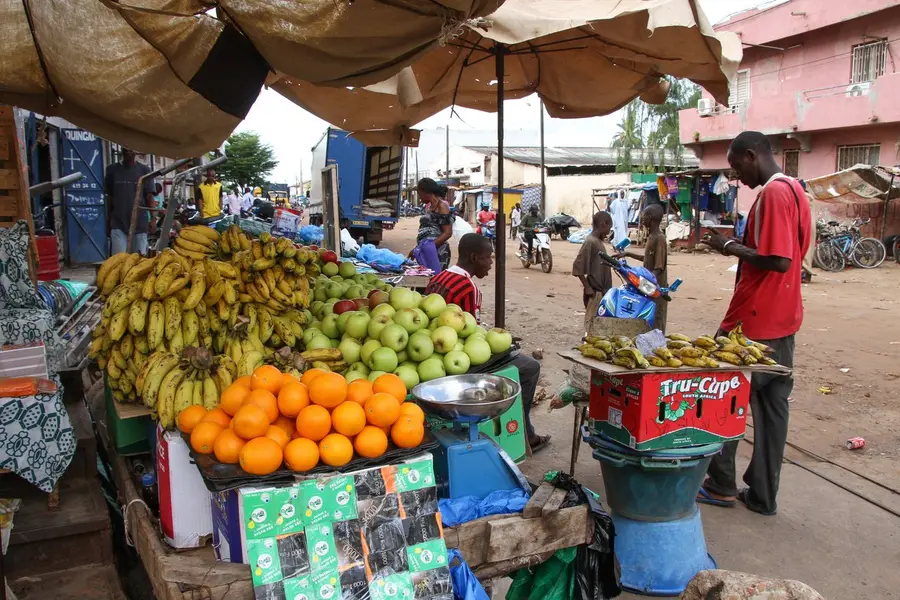
Kaolack is an important river port in Senegal, strategically located between Dakar and the Gambia. Its market is one of our top 10 most colorful markets in the world , and one of the most authentic in the region. From fruit and vegetables to colorful fabrics, typical Senegalese musical instruments and herbal remedies, you'll find it all! Less crowded, the small craft market is also worth a visit for jewelry and local specialties.
12. Gorée Island
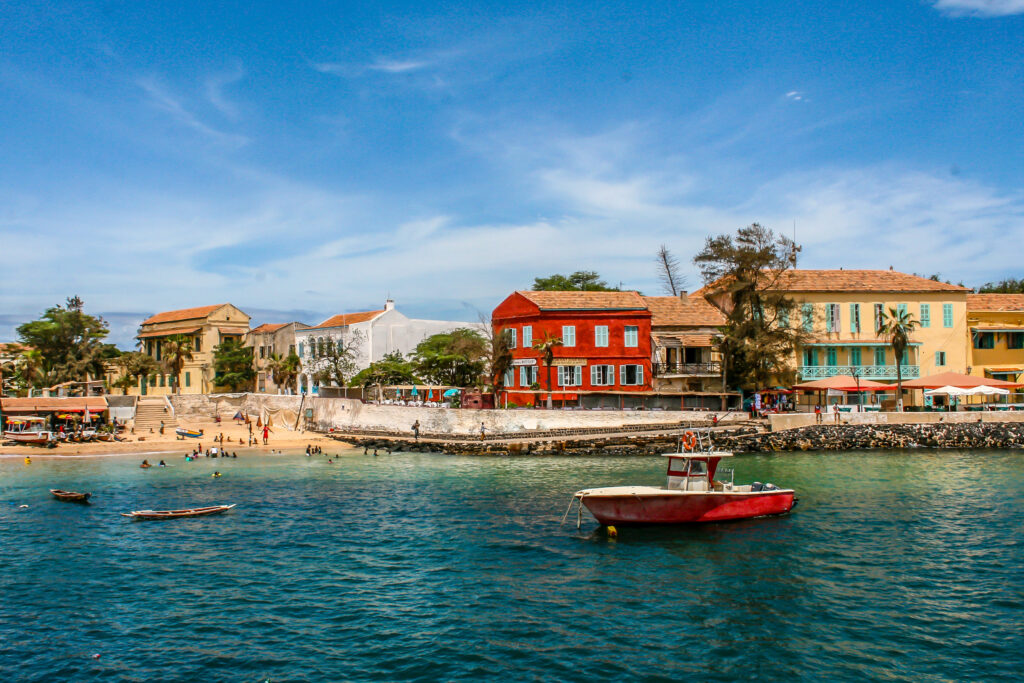
Goree Island is a unique place steeped in history, and a must-see on any trip to Senegal. Listed as a UNESCO World Heritage Site since 1978, it is a symbol of the African slave trade, but also of reconciliation between peoples. Soak up its special atmosphere, appreciate its quiet charm and stroll through its bougainvillea-lined streets, where you'll find decrepit colonial buildings and unique colors: faded reds with the patina of the ages, fragile Spanish (or Italian) ochres... and of course, visit its museums and museums of art. And, of course, visit its museums and the famous Maison des Esclaves, a place of memory for an entire continent.
13. The Kédougou region
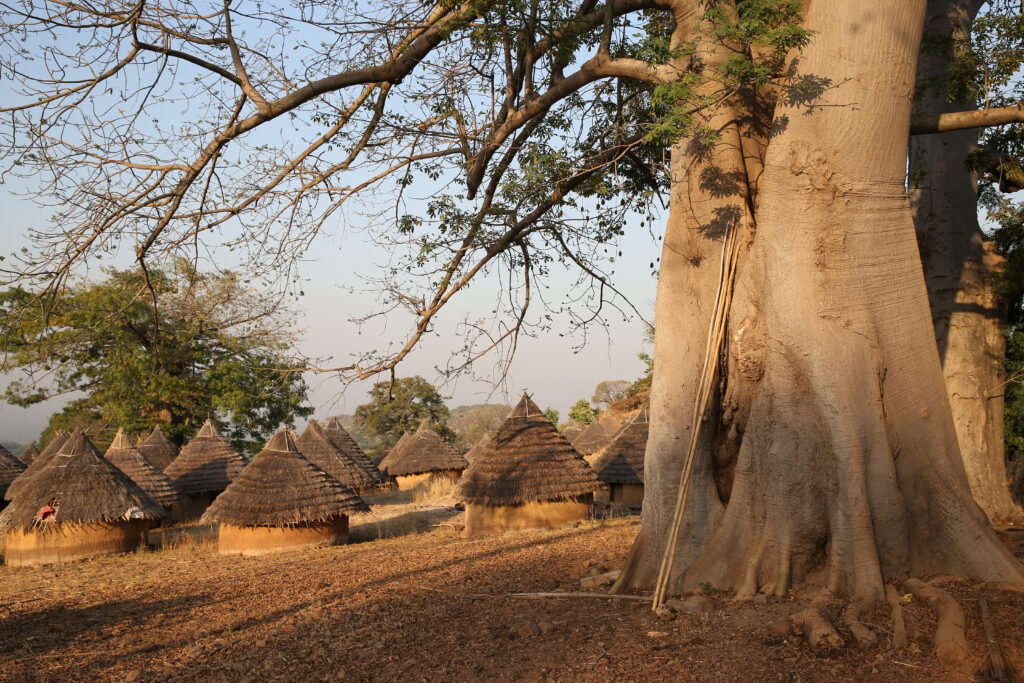
The Kédougou region is renowned for its charm and beauty. Here, the river, named after another country, Gambia, refreshes the air a little, and the hills soothe the eternal flatness. On arrival, you discover the curves of the surrounding hills. The last foothills of the Fouta Djalon in Guinea-Conakry, giving the landscape a beauty that is unique to Senegal, waterfalls and cliffs that are the delight of hiking tourists. And if you arrive just after the first rains, you'll be treated to equatorial greenery.
14. Visit the Popenguine grotto
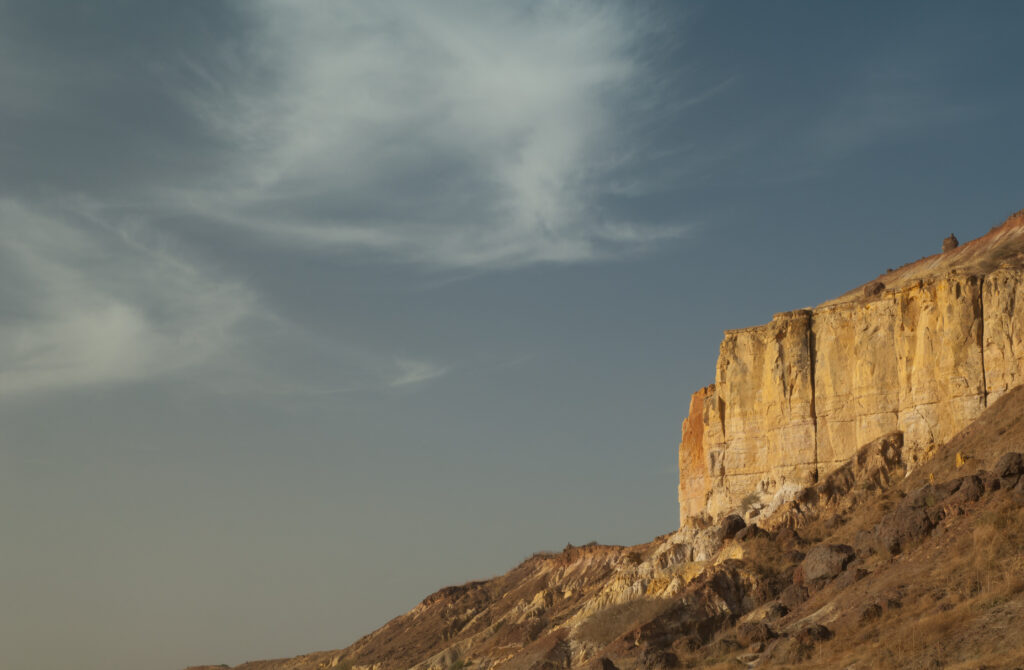
Around 70 km from Dakar, Popenguine is a peaceful village nestled on the cliffs of Cap de Nazé. It is famous for its Notre-Dame-de-la-Délivrance shrine and grotto, where the Virgin Mary is said to have appeared to a group of fishermen. Since then, the Popenguine grotto has become an important religious site, attracting thousands of pilgrims every year from Senegal and beyond to pray and meditate in this sacred place. Popenguine is also known as the summer residence of Senegal's current president.
15. What to do in Senegal Taste the local culinary delights
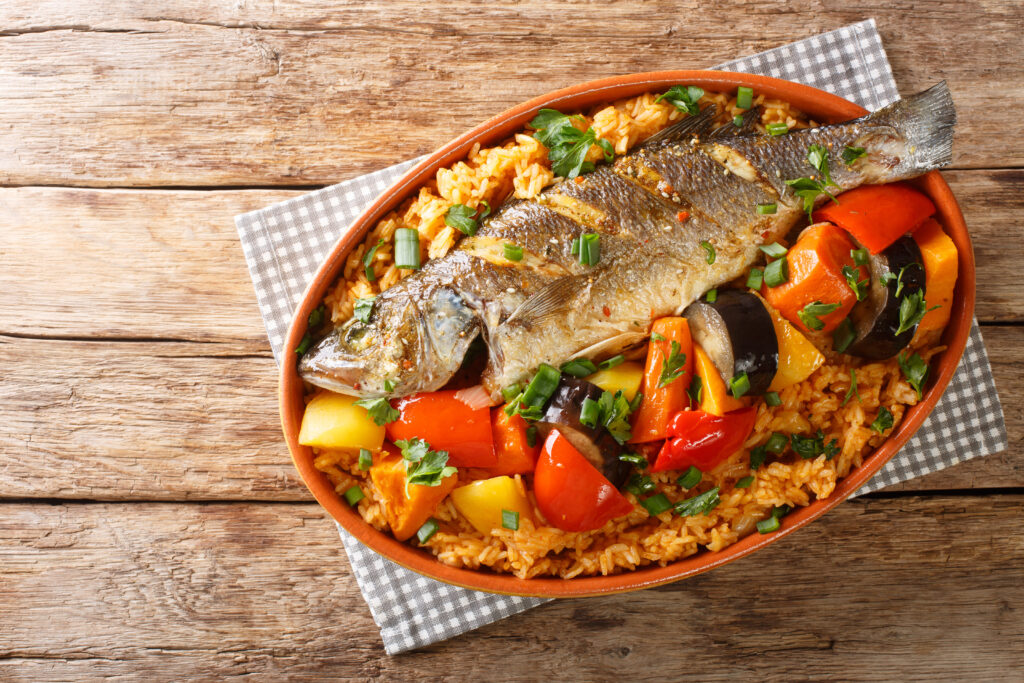
Senegalese cuisine is rich in flavor and diversity, blending African, Arab and European influences. These are just some of the Senegalese culinary specialties you should try during your visit. Considered Senegal's national dish, thieboudienne is a fish stew served with rice and vegetables. It is often accompanied by tomato sauce, cabbage, carrots, eggplant and other vegetables. You can also try mafé, a spicy meat stew, or yassa, a meat (chicken, beef or fish) marinated in a sauce of onions, lemon juice, mustard and spices. For those with a sweet tooth, don't miss Cassava Cake (Gateau de Manioc), a cake made with grated cassava, coconut, eggs and sugar.
How can I visit Senegal in a week?
Senegal is one of those original destinations to discover with the family in winter. It's also one of our favorite French-speaking destinations.
Discover our itinerary tips to make the most of your vacation there and help you plan a memorable stay! Visiting Senegal in a week requires effective planning to make the most of your stay. Here's a suggested itinerary to help you discover some of the country's highlights:
Day 1-2: Dakar
- Arrive at Blaise Diagne International Airport.
- Explore the capital, Dakar, visiting sites such as Place de l'Indépendance, the Grande Mosquée de Dakar, the Monument de la Renaissance Africaine and Gorée Island.
Day 3: Saloum Delta National Park
- Travel to the Saloum Delta National Park to discover its biodiversity, mangroves and fishing villages.
- Take a boat trip to observe the flora and fauna.
Day 4-5: Saint-Louis
- Head for Saint-Louis, a charming colonial city.
- Explore the island of Saint-Louis, a UNESCO World Heritage site.
- Visit the Langue de Barbarie nature reserve.
Day 6: Bandia Reserve and Saly beach
- En route to the Bandia Reserve for a 4x4 safari, where you can see wild animals.
- End the day at Saly beach to relax.
Day 7: Return to Dakar
- Spend your last day in Dakar shopping at Sandaga or Kermel markets.
- Visit the Maison des Esclaves on the island of Gorée if you haven't already done so.
Be sure to adapt this itinerary to suit your personal interests and travel pace. Senegal offers a variety of cultural, historical and natural experiences, so take the time to enjoy every moment. Don't forget to sample the delicious Senegalese cuisine and interact with the locals for a more authentic experience.
How to visit Senegal in 15 days?
With an extra week, you'll have the chance to explore more of Senegal's regions and deepen your experience. Here's a possible itinerary extension:
Day 8-9: Niokolo-Koba National Park
- Travel to Niokolo-Koba National Park, a UNESCO World Heritage Site.
- Take a safari to observe the park's diverse wildlife, including elephants, lions, giraffes and antelopes.
Day 10-11: Casamance
- Explore the Casamance region, an area in the south of the country renowned for its natural beauty.
- Visit the town of Ziguinchor and discover the Diola culture.
- Enjoy the peaceful beaches of Cap Skirring.
Day 12-13: Lac Rose and Dakar Reserve
- Head to Lac Rose (Retba) for a unique experience. You can even try your hand at surfing the sand dunes.
- Visit the Dakar Reserve, home to a wide variety of birds.
Day 14: Relax at the beach
- Spend your last day relaxing on one of Senegal's beaches.
- Enjoy the sun, sea and tranquillity.
By adding an extra week, you can explore more remote and less-visited parts of Senegal, offering a more complete experience of the country. Be sure to check travel and health requirements, and adapt the itinerary to suit your personal preferences. Tempted by a vacation in Senegal? Take advantage of a discount by booking your travel insurance here, and leave with peace of mind!
What are the most beautiful places in Senegal?
It's not for nothing that Senegal is considered an African paradise! In fact, it's brimming with magnificent places not to be missed during your stay. Here are just a few of the most beautiful places to discover:
- Île de Gorée: Located off the coast of Dakar, this island is a UNESCO World Heritage Site. Gorée is known for its colonial architecture, picturesque alleyways and history linked to the slave trade.
- Parc National du Delta du Saloum: A natural park of mangroves, lagoons and islands, offering exceptional biodiversity. An ideal place for nature lovers and birdwatchers.
- Saint-Louis: The former capital of Senegal, Saint-Louis is a charming city with French colonial architecture. The island of Saint-Louis, on the Senegal River, is a UNESCO World Heritage Site.
- Niokolo-Koba National Park: This park, also a UNESCO World Heritage Site, is the largest biosphere reserve in West Africa. It is home to an impressive array of wildlife, including elephants, lions, leopards and giraffes.
- Lac Rose (Retba): Known for its unique pink color due to the presence of algae, Lac Rose is a fascinating place. It is also famous for the Paris-Dakar rally, which takes place in its vicinity.
What to do in Senegal in February?
Planning a trip to Senegal this winter ? February is a great time to visit Senegal, as the climate is generally mild and dry. Here are some activities you might enjoy during your stay in February:
- Beaches and water sports: Senegal's beaches, such as Saly, offer ideal conditions for relaxing in the sun. You can also enjoy water sports such as surfing, windsurfing and kitesurfing.
- Explore Dakar: Visit the emblematic sites of the capital, Dakar, such as the Place de l'Indépendance, the Monument de la Renaissance africaine and the Maison des Esclaves on the island of Gorée.
- Saloum Delta National Park: Take advantage of the dry season to explore the Saloum Delta National Park. Take a boat trip through the mangroves, observe the local wildlife and discover the fishing villages.
- Birdwatching: Senegal is a paradise for birdwatchers. Visit reserves such as the Dakar Reserve or the Langue de Barbarie to observe a wide variety of birds.
See also our article Top 10 destinations to discover in Africa!


